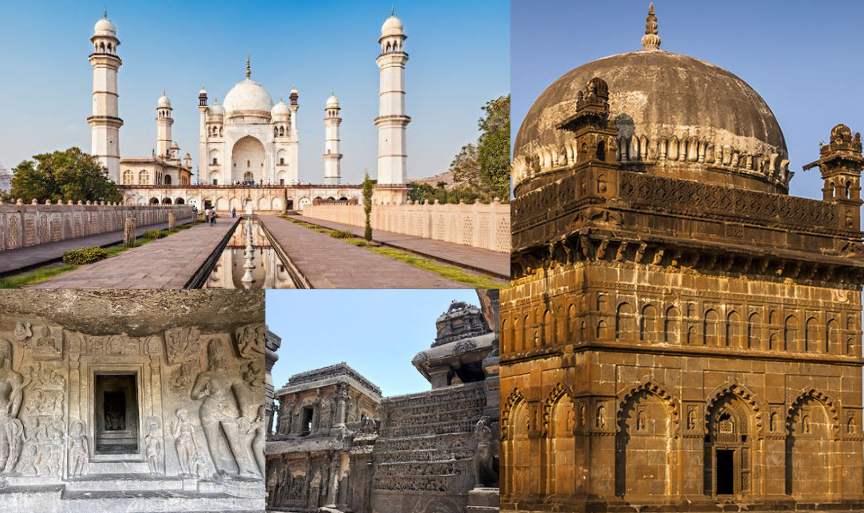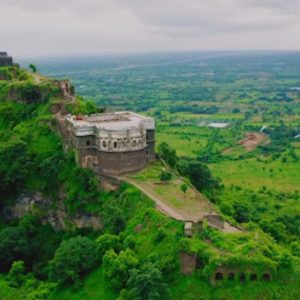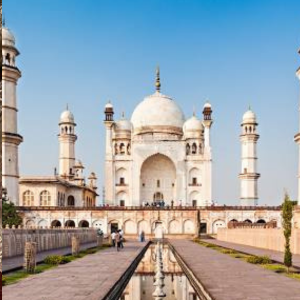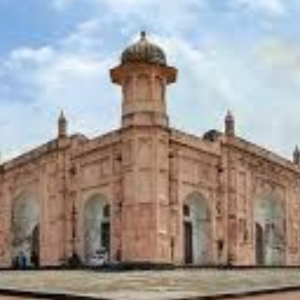Aurangabad is a hidden gem in Maharashtra. The Ajanta and Ellora Caves were nothing short of breathtaking, and the grandeur of Bibi Ka Maqbara is truly awe-inspiring. The city is a perfect blend of history, architecture, and culture. I would highly recommend it for anyone interested in exploring India's rich heritage
- Home
- About Us
- International
- Africa
- America
- Asia
- Australia & New Zealand
- Europe
- Middle East
AfricaEgypt
Mauritius
Zimbabve
AmericaAsiaAustralia & New ZealandEuropeCentral and Eastern Europe
Highlights
Mediterranean Europe
Middle East - Domestic
- North India
- South India
- East and North East
- Rajasthan, West and Central
North IndiaDelhi
Himachal Pradesh
Uttarakhand
Amritsar
Chandigarh
Punjab & Haryana
Uttar Pradesh
South IndiaAndaman and Nicobar Islands
Kerela
Andhra Pradesh
Tamil Nadu
East and North EastAssam
Nagaland
Tripura
Meghalaya
Rajasthan, West and Central - Temple Darshan
- Group Booking
- Blogs
- Contact Us
Sights

Explore Aurangabad
Aurangabad, a prominent city in Maharashtra, is a treasure trove of history, culture, and architecture. Known for its rich heritage, this city has been a key center during the rule of the Mughal Empire and features several stunning monuments, temples, and natural wonders. It is often referred to as the “City of Gates” due to its historical fortifications and gateways. Whether you’re a history enthusiast, nature lover, or cultural explorer, Aurangabad offers a unique blend of all
Places You'll See





Tour Highlights
- Well planned Tour itinerary.
- Kitchen as per your own convenience.
- Best hotels through out the tour.
- Unique tour of Scenic Beauty
- Stay in destinations that have proper facilities like hospitals, Market.
- Our groups are scheduled back to back, which is very helpful.
Tour Itinerary
Aurangabad
Days Plan
Day 1: Arrival and City Exploration
Morning:
- Arrive in Aurangabad, either by train, bus, or flight to Aurangabad Airport (IXU).
- Check into your hotel and freshen up.
- Start your exploration with a visit to the Bibi Ka Maqbara, also known as the “Taj of the Deccan”. This stunning Mughal mausoleum is reminiscent of the Taj Mahal in Agra and is the resting place of Empress Rabia Durrani.
Afternoon:
- Visit the Aurangabad Caves, a group of Buddhist rock-cut caves located just outside the city. These caves are known for their exquisite sculptures and paintings depicting Buddhist themes.
- Afterward, head to Daulatabad Fort, which is situated on a hilltop and offers panoramic views of the surrounding area. Explore the fort’s intricate design, gateways, and water systems.
Evening:
- Visit Chhatrapati Shivaji Maharaj Museum (formerly the Aurangabad Museum), to gain insight into the history and culture of the region.
- Enjoy dinner at a local restaurant serving traditional Maharashtrian cuisine, such as Misal Pav, Vada Pav, and Thali.
Day 2: Ajanta and Ellora Caves
Morning:
- Depart early for a day trip to the Ajanta Caves, located about 100 km from Aurangabad. The caves are famous for their ancient Buddhist temples and stunning frescoes that depict scenes from the life of the Buddha. The Ajanta Caves are a UNESCO World Heritage Site and one of India’s most important historical landmarks.
Afternoon:
- Continue your exploration at Ellora Caves, around 30 km from Aurangabad. These caves are a combination of Hindu, Buddhist, and Jain temples and monasteries carved into the mountainside. Don’t miss the grand Kailasa Temple, a monolithic structure carved out of a single rock, which is an architectural marvel.
Evening:
- Return to Aurangabad and relax. If you have time, you can visit the Panchakki, an ancient water mill built in the 17th century, used for grinding grains.
Day 3: Temples and Departure
Morning:
- Visit the Grishneshwar Temple, one of the twelve Jyotirlingas dedicated to Lord Shiva. The temple is located near Ellora Caves and is an important pilgrimage site.
Midday:
- Explore Lonar Lake, a unique soda-lime lake formed by a meteor impact. The lake is located around 120 km from Aurangabad but is worth visiting if you are an adventure lover or nature enthusiast.
Afternoon:
- Take a short walk around the Bani Begum Garden or the Zaffarabad area for some local shopping, and pick up Paithani sarees or Bidri handicrafts as souvenirs.
Evening:
- Head back to your hotel, check out, and proceed to your next destination or the Aurangabad airport/station for your departure.
Notes:
• 2 passport size photos
• Adult – Original + photocopy of any of the ID proof i.e. Aadhar Card / Driving Licence / Voters ID / Passport
• Child – Original + photocopy of any of the ID proof i.e. Aadhar Card / School ID / Passport
• Infant – Aadhar Card / Birth certificate
• NRI / Foreign nationals – Mandatory Passport + Valid Indian visa / OCI card / PIO card
• Above mentioned ID proof is mandatory at the time of booking and carry the same ID proof on tour as well
Aurangabad
Tour Details
Hear from Our
Happy Travelers

I had an amazing time in Aurangabad! The historical sites were incredible, especially the Ellora Caves and Daulatabad Fort. The city is rich in history and culture, and the people are warm and welcoming. A must-visit for history enthusiasts!"

"Planning a Northern Chardham Yatra seemed daunting, but Salt and Sea Adventure made it incredibly simple and enjoyable. Their professional team handled everything, from trekking arrangements to providing authentic local meals and excellent stays. The breathtaking sights of Gangotri and Kedarnath combined with their exceptional service made this trip unforgettable. If you’re looking for a stress-free spiritual journey, they’re the ones to trust!"

Best Time to Visit:
Winter (October to February):
This is the best time to visit Aurangabad, as the weather is cool and comfortable, ideal for exploring historical sites and caves. The temperature ranges from 10°C to 25°C during this season.Summer (March to June):
Summers in Aurangabad can be hot, with temperatures soaring above 40°C. It is best to visit early in the morning or late in the evening during this time.
How to Reach:
By Air:
- Aurangabad Airport (IXU) is well-connected to major cities like Mumbai, Pune, and Delhi. From the airport, you can take a taxi to your hotel.
By Train:
- Aurangabad Railway Station is well-connected to other major cities like Mumbai, Pune, and Nagpur. You can take a train to Aurangabad and use local transport like taxis or rickshaws to get around.
By Road:
- Aurangabad is well-connected by road to cities like Pune (5 hours), Mumbai (6-7 hours), and Nagpur (5 hours). You can drive or take a bus to Aurangabad.
Importance of Aurangabad:
The Ajanta Caves (UNESCO World Heritage Site) are a series of rock-cut Buddhist monasteries and temples that date back to the 2nd century BCE. Known for theirUNESCO World Heritage Site, are located near Aurangabad. These 34 caves are a mixture of Hindu, Buddhist, and Jain temples, including the stunning Kailasa Temple (Carved from a single rock). The caves are an architectural marvel and showcase India’s rich cultural diversity. exquisite murals and sculptures, these caves are a remarkable example of ancient Indian art and architecture

Book Now and embark on your next unforgettable adventure
With our team of seasoned travel experts and local guides, we ensure that each trip is crafted to perfection, tailored to your preferences, and filled with unforgettable memories.



